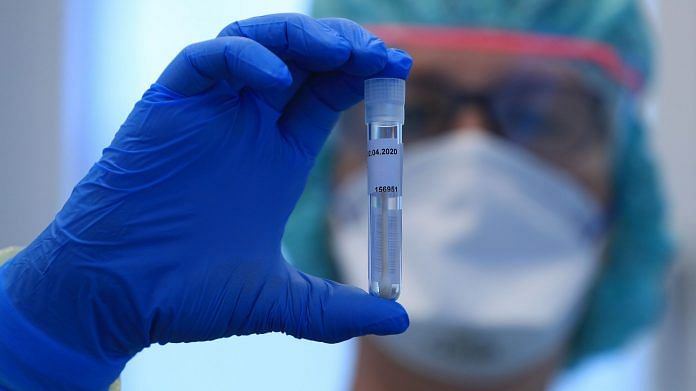New Delhi: The way to defeat a pandemic, which has no cure, is a vaccine. On 10 January the coronavirus genome was decoded and just two days later, work on a potential vaccine began.
On 8 January, a Wall Street Journal article talked about the virus publicly for the first time and by March, vaccine trials had started. US biotechnology company Moderna and China-based biopharmaceutical company Sinovac have started trials for a vaccine. These trials have never started this early before. Vaccine for the Zika virus was under trial very quickly, but even that took at least six months.
In stage one of clinical trials for a vaccine, it is just checked if the vaccine is safe to take. Only 10 to 20 healthy volunteers are needed for this trial. In the second stage, the sample size is increased. In further trials, there are placebo controls and studies are conducted to determine how the immune system responds to the vaccine.
Also read: Pune start-up develops portable test that can diagnose Covid-19 in an hour
Types of vaccines
Weakened or attenuated viruses are commonly used to make vaccines. This is the same concept using for the first polio vaccine, which was invented in 1955. While this technique is being used today as well, there are other ways to create a vaccine. Serum Institute of India and US firm Codagenix are working together on an attenuated virus to create a vaccine for Covid-19.
Today, other viruses can be modified and used as coronavirus vaccines. Proteins of the Covid-19 can be put on those viruses. Once these proteins enter the body, the immune system attacks them and identifies them as the enemy. Thus, when the actual virus enters the body, the immune system is prepared. More advanced methods such as messenger RNA (mRNA) type vaccines are also under development. Moderna’s vaccine, mRNA1273, is an mRNA vaccine. mRNA’s are stitched to the gene of the spike protein of the coronavirus, which then takes it to the body and prepares it to fight against the virus.
How vaccines work
Every individual doesn’t need to be vaccinated for the population to defeat the coronavirus pandemic. It is important to focus on the reproduction rate of the virus. R-naught refers to the number of people that one infected person can infect. Just as the virus spreads the R-naught is greater than 1, the virus begins to get contained only when R-naught is under 1.
The first polio vaccine was only 70 per cent effective, and 70 per cent of children received it, but polio went down by 96.6 per cent in six years in America. So even if a vaccine is not 100 per cent effective, it can be used to defeat the virus.
Watch the latest episode of CTC here:
Also read: Old drugs, new trials — hopes pinned on HIV, malaria, ebola, TB vaccines to fight Covid-19




Kna vaccin